This is the second of two posts on application sandboxing for GNOME. In my previous post, I wrote about why application sandboxing is important, and the many positive impacts it could have. In this post, I’m going to concentrate on the user experience design of application sandboxing.
The problem
As I previously argued, application sandboxing has the potential to greatly improve user experience. Privacy features can make users feel more secure and in control, and performance can be improved, for example. At the same time, there is a risk involved with adding security layers: if a security framework is bothersome, or makes software more difficult to use, then it can degrade the user experience.
Sandboxing could be truly revolutionary, but it will fall flat on its face if no one wants to use it. If application sandboxing is going to be a success, it therefore needs to be designed in such a way that it doesn’t get in the way, and doesn’t add too many hurdles for users. This is one reason why effective design is an essential part of the application sandboxing initiative.
Some principles
Discussion about sandboxed applications has been happening in the GNOME project for some time. As these discussions have progressed, we’ve identified some principles that we want to follow in ensuring that sandboxed application provide a positive user experience. Before I get into the designs themselves, it’s useful to quickly go over these principles.
Avoid contracts
Sandboxed applications have limited access to system API and user data and, if they want more access, they have to ask the user for it. One way to allow apps to ask for these permissions is to present a set of application requirements that the user must agree to at install time. Anyone who uses Android will be familiar with this model.
Asking for blanket user permissions at install time is not something we are in favour of, for a number of reasons:
- People have a tendency to agree to contracts without reading them, or without understanding their implications.
- It often isn’t clear why the application wants access to the things it wants access to, nor is it clear when it will use them. There is little feedback about application behaviour.
- There’s no opportunity to try the app before you decide what it gets access to. This is an issue because, prior to using the application, the user is not in a good position to evaluate what it should get access to.
- Asking for permissions up front makes software updates difficult, since applications might change what they want access to.
It doesn’t have to look like security
All too often, security requests can be scary and intimating things, and they can feel far removed from what a user is actually trying to do. It doesn’t have to be this way, though: security questions don’t have to be expressed using scary security language. They don’t even have to look like security – the primary purpose of posing a security question is to ascertain that a piece of software is doing what the user wants it to do, and often, you can verify this without the user even realising that they are being asked a question for security purposes.
We can take this principle even further. The moment when you ask a security question can be an opportunity to present useful informations or controls – these moments can become a valuable, useful, and even enjoyable part of the experience.
Privacy is the interesting part
People tend to be interested in privacy far more than security. Generally speaking, they are concerned with who can see them and how they appear, rather than with abstract security threats. Thinking in terms of privacy rather than security therefore helps us to shift the user experience in a more human-orientated direction. It prompts us to think about social and presentational issues. It makes us think about people rather than technology.
Real-time feedback
A key part of any security framework is getting real-time feedback about what kinds of access are occurring at any one time. Providing real-time feedback makes the system much more transparent and, as a result, builds trust and understanding, as well as the opportunity to quickly respond when undesirable access occurs. We want to build this into the design, so that you get immediate feedback about which devices and services are being used by applications.
Audit and revocation
This is another key part of security, and follows on from real-time feedback. A vital area that needs to be addressed is the ability to see which services and data have been accessed in the past and which application accessed them. It should be possible to revoke access to individual services or devices based on your changing needs as a user, so that you have genuine control over what your applications get to see and do.
Key design elements
User-facing mechanisms for applications to request access to services and data are one obvious thing that needs to be designed for sandboxed applications. We also need to design how feedback will be given when services are being accessed, and so on.
At the same time, application sandboxing also requires that we design new, enabling features. By definition, sandboxed applications are isolated and can have limited permissions. This represents a challenge, since an isolated application must still be able to function and, as a part of this, it needs (mediated, secure) mechanisms for basic functions, like importing content, or passing content items to other apps. This is the positive aspect of the sandboxing user experience.
Sharing
Here, sharing is the kind of functionality that is commonly found on mobile platforms. It is a framework which allows a user to pass content items (images, documents, contacts, etc) from one app to another (or to a system service). This is one of the positive, enabling pieces of functionality that we want to implement around application sandboxing.
Sharing is important for sandboxing because it provides a secure way to pass content between applications. It means that persistent access to the user’s files will be less important for many applications.
The sharing system is envisaged to work like many others – each application can provide a share action, which passes a content item to the sharing service. The system determines which applications and services are capable of receiving the content item, and presents these as a set of choices to the user.
In the example shown above, an image that is being viewed in Photos is being shared. Other applications that can use this image are then listed in a system-provided dialog window. Notice that online accounts are also able to act as share points in this system, as are system services, like Bluetooth, Device Send (using DLNA), or setting the wallpaper.
Content selection
Content selection plays a similar role to sharing, but in reverse: where sharing allows a user to pass content items from a sandboxed application, content selection is a mechanism that allows them to pull them in.
Content selection has traditionally occurred through the file chooser dialog. There are a number of obvious disadvantages with this approach, of course. First, content items have to be files: you can’t select a contact or a note or an appointment through the file chooser. Second, content items have to be local: content from the cloud cannot be selected.
The traditional file chooser isn’t well-suited to sandboxed applications. Sandboxing implies that applications might not be able to save content to a common location on disk: this means that we need a much more flexible content selection framework.
Content selection should enable content from a range of applications to be selected. Content can be filtered by source application, and it can include items that aren’t files and aren’t even stored locally.
System authorisation
Sharing and content selection are intended to provide (system mediated) mechanisms for opening or sending individual content items from sandboxed applications. When access is required to hardware devices (like cameras or microphones), or permanent access is required to the user’s files or data (such as contacts or the calendar), the system needs to check that access is authorised.
For cases like this, there is little option but to present the user with a direct check – the system needs to present a dialog which asks the user whether the application should have access to the things it wants to have access to. The advantage of posing a direct question at the time of access is that it provides real-time feedback about what an application is attempting to do.
In line with the principles I outlined above, we’re pushing to take the sting out of these dialogs, by phrasing them as relatively friendly/useful questions, rather than as scary security warnings. We’re also exploring ways to make them into useful parts of the user experience, as you can see with the camera example: in this case, the security dialog is also an opportunity to check which microphone the user wants to use, as well as to indicate the input level.
A key requirement for the design is that these access request dialogs feel like they are part of your natural workflow – they shouldn’t be too much of an interruption, and they should feel helpful. One technique we’ll need to use here is to restrict when system authorisation dialogs can be shown, since we don’t want them popping up uninvited. It certainly shouldn’t be possible for an application to pop up an access request while you are using a different application.
Real-time feedback, audit and revocation
As I said above, providing real-time feedback about when certain services are being used is one of the goals of the design. Here, we plan to extend the system status area to indicate when cameras, microphones, location and other services and devices are in use by applications.
We also have designs to extend GNOME’s privacy settings, so that you can see which services and content have been accessed by applications. You will be able to restrict access to these different services, and block individual applications from accessing them.
Pulling it all together
One of the things that I’ve tried to demonstrate in this post is that implementing application sandboxing isn’t just about adding security layers to desktop infrastructure. It also requires that we carefully think about what it will be like for people to use these applications, and that security frameworks be designed with user experience in mind.
We need to think beyond security to actually making sandboxing into a positive thing that users and developers want to use. For me, one of the most exciting things about sandxboxing is that it provides the opportunity to add new, powerful features to the GNOME application platform. It can be enabling rather than being a purely restrictive technology.
These designs also show that application sandboxing isn’t just about low-level infrastructure. Work needs to be done across the whole stack in order to make sandboxing a reality. This will require a combined effort that we can all participate in and contribute to. It’s the next step for the Free Software desktop, after all.
The designs that I’ve presented here are in the early stages of development. They will evolve as these initiatives progress, and everyone working in this area will have the opportunity to help develop them with us.
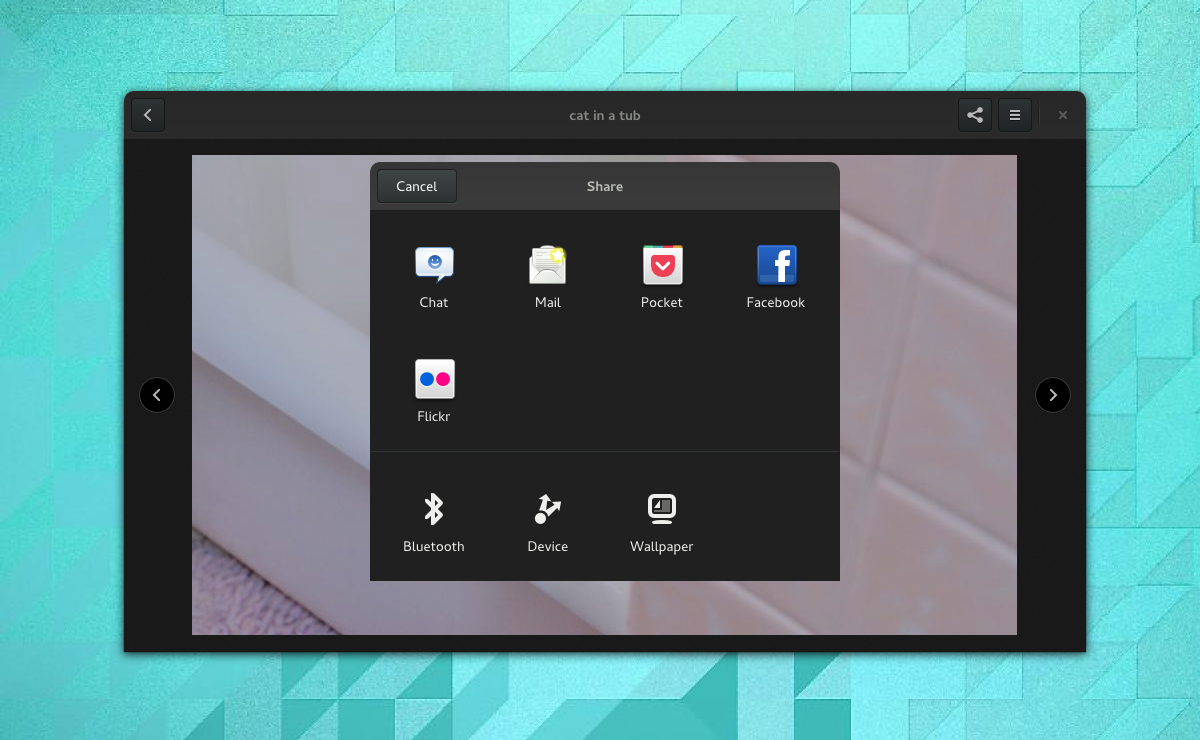
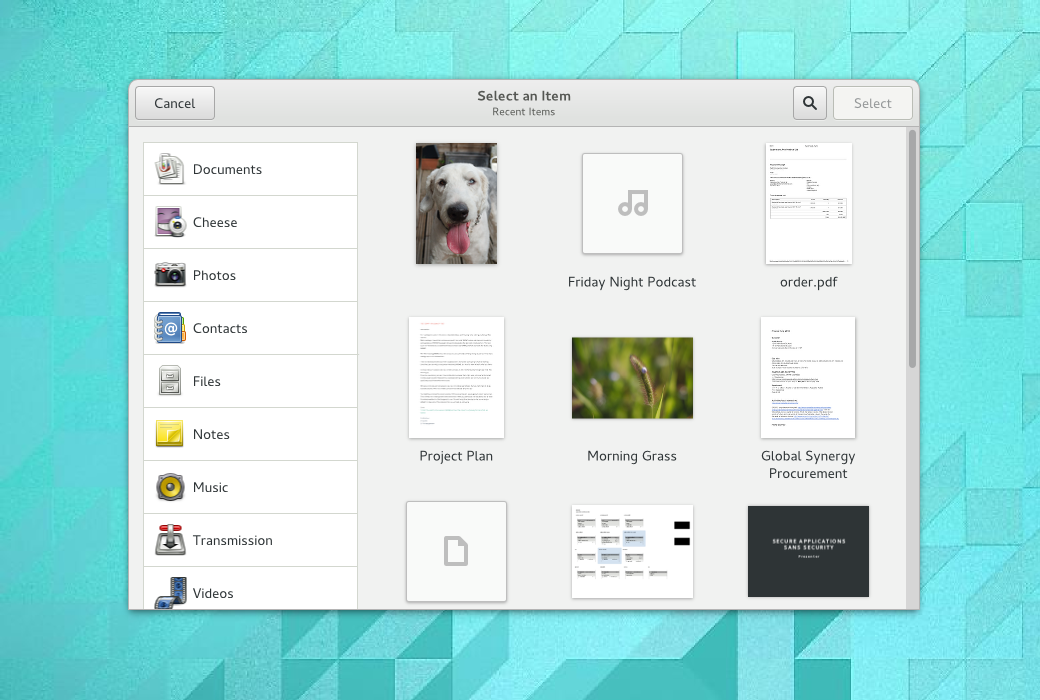
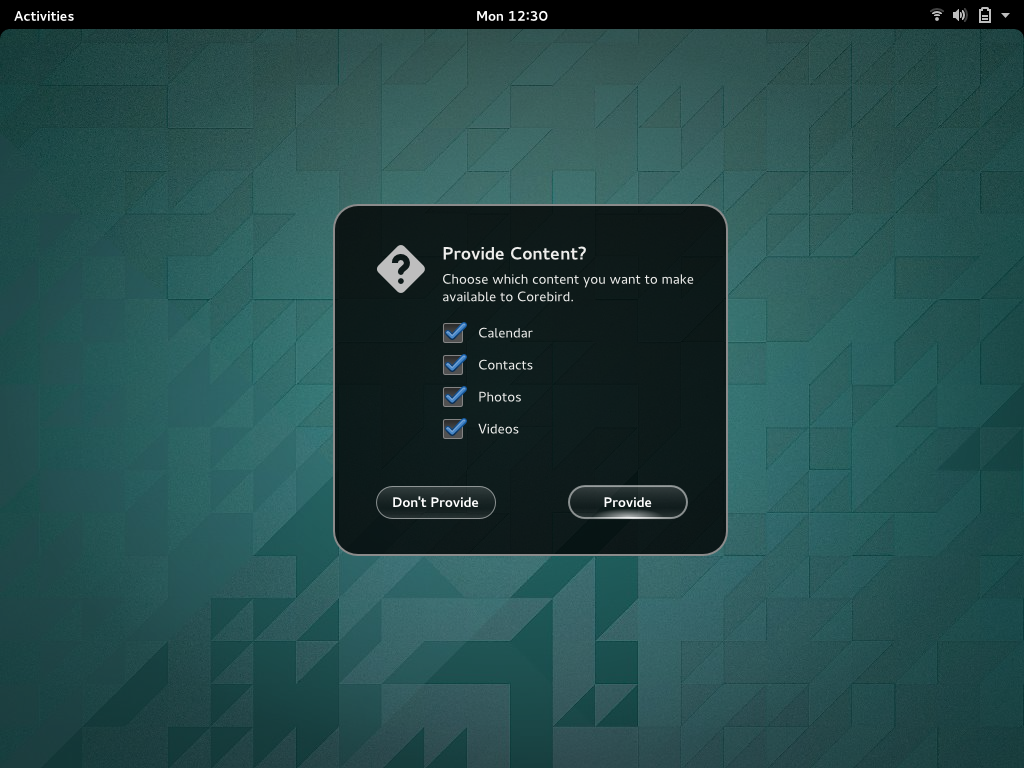
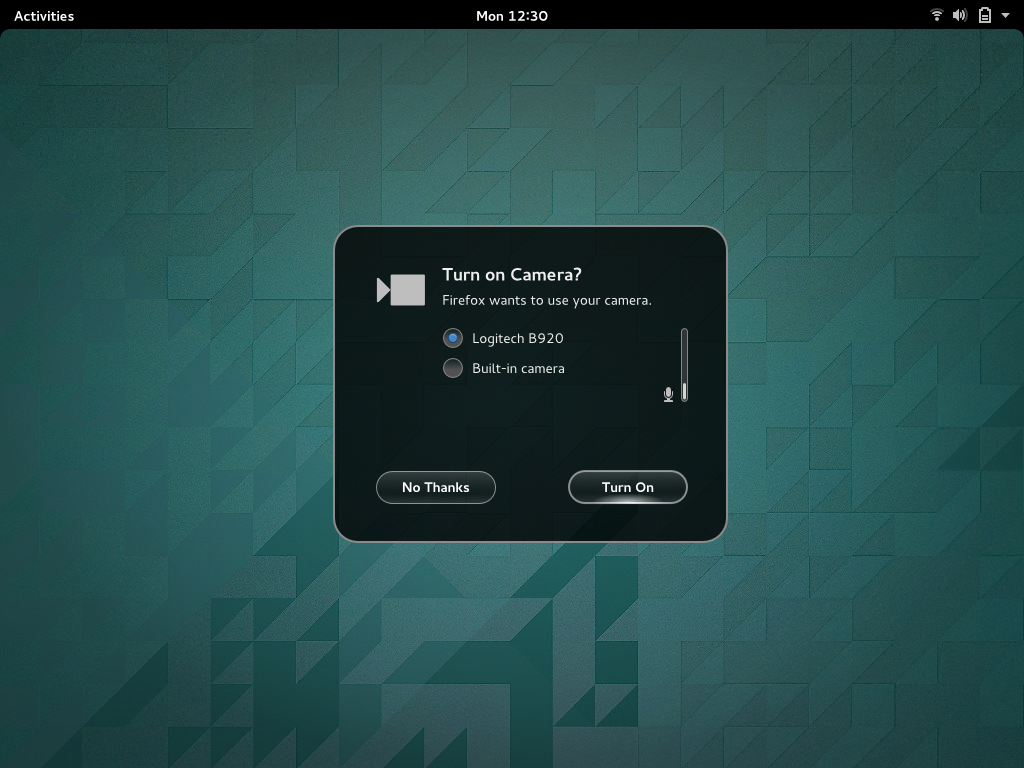
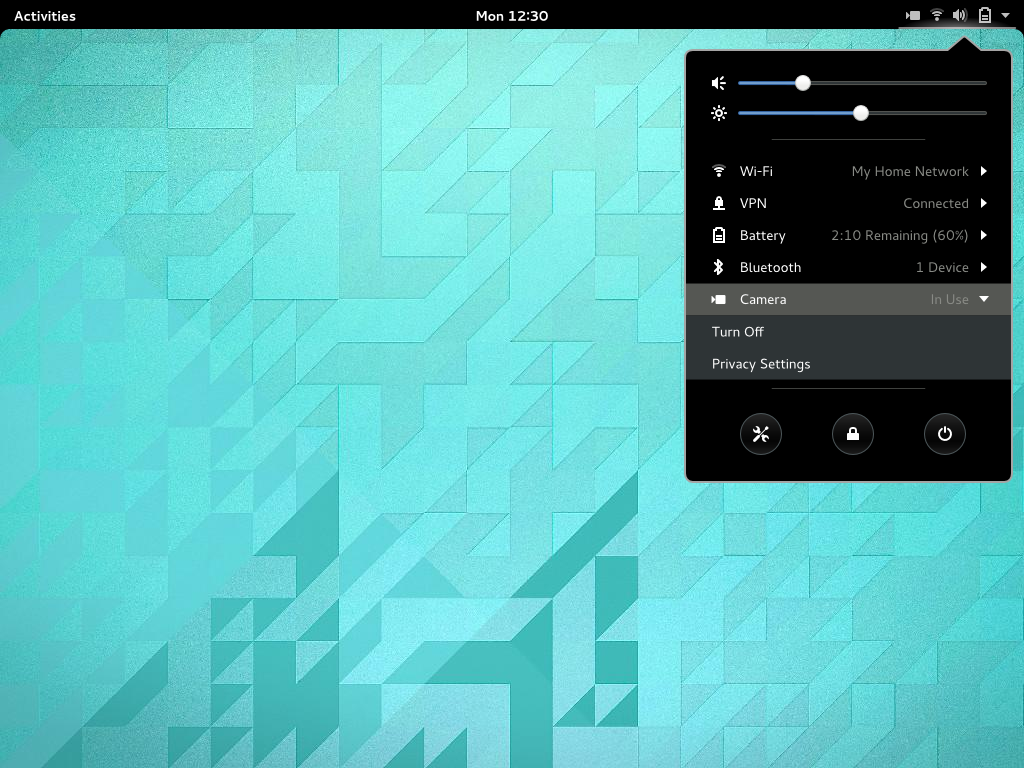
‘Audit and revocation’ is a really important feature. That is the thing that bothers me when I install android applications: permissions are an all or nothing choice. User should really have the control of the permissions, service by service, at any time.
An application should be expected to always work, even when given zero permission. Useless, may be, for applications like cheese without camera access. But if they crash in such situation, it should be considered as an application bug.
Thanks a lot for your work.
The problem I see with those dialogs is they don’t tell me what application is asking for permission.
they do tell you which app is requesting permission to access stuff, if you read the text.
maybe it should be a tad more prominent.
Whoops, my mistake. was reading the article on the train on my phone and didn’t see the reference to the application.
It seems to me as if this would have quite some similarities to FSOs (freesmartphone.org) Usage and Resource handling. Maybe you might have a look at it: http://git.freesmartphone.org/?p=specs.git;a=blob_plain;f=html/usage-intro.html;hb=HEAD
Or get in touch: http://lists.openphoenux.org/mailman/listinfo/fso
What’s missing is the idea that, where possible, apps be written to cope with not getting permissions they ask for.
Sure, some things genuinely are required functionality, but developers shouldn’t treat permissions as all-or-nothing. E.g software for post-processing photos shouldn’t *require* the capability to use the camera – that’s just a convenient source of images to work on.
Apps being able to run without permissions is somewhat implied by the designs I described – if an app has to ask for access while it is already running, or if its permissions can be revoked, then it is implicit that it should be functional without those permissions.
But you’re right – I should have talked a bit about that.
Noooo not annoying dialogs when applications require access to something (Firefox screen), please… Just let me allow it to use what I want forever.
And the Corebird dialog and icons blinking in the system status area are useless… They can tell me contacts are being accessed but not what the app is going to do with them. In fact devs can collect everything they want in a legit usage of the API, store, then send to their servers later. My point: There’s no increase in privacy… Only clutter and annoying dialogs… Just let me use my computer…
And I thought the admin/root password dialogs were already annoying enough…
So, one thing that occurred to me that doesn’t seem to be answered is persistence. Take the ‘Firefox wants to use the webcam’ dialog. Is that going to popup every time you make a video call or record a video or whatever in Firefox? If not, how do you handle modification of the initial choice?
So,can you completely cut off an app from accessing the network?